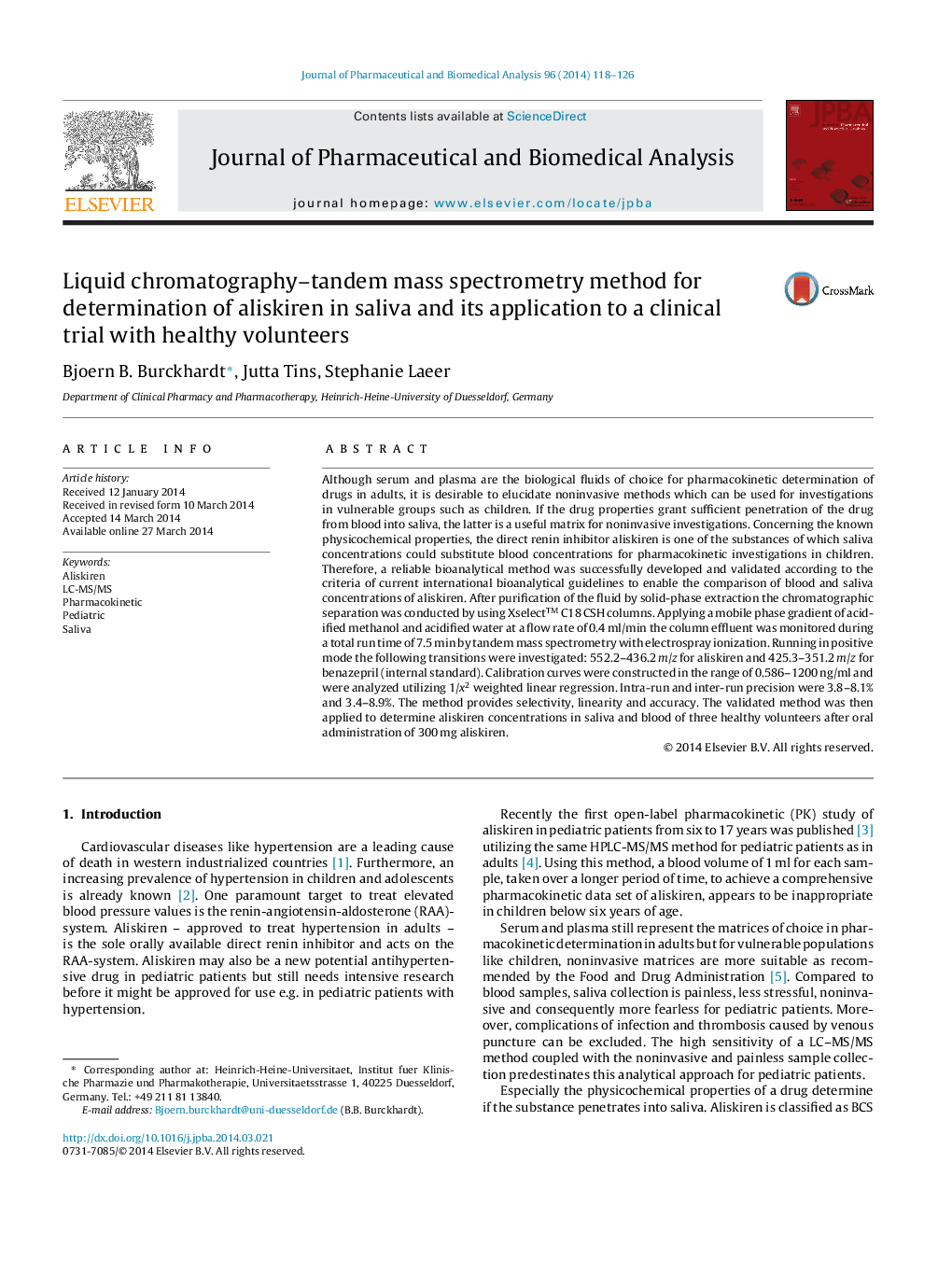| Article ID | Journal | Published Year | Pages | File Type |
|---|---|---|---|---|
| 1221664 | Journal of Pharmaceutical and Biomedical Analysis | 2014 | 9 Pages |
•Following FDA recommendations for pediatric research a noninvasive method was developed.•First time of quantitative and qualitative determination of aliskiren in saliva.•Successful validation according to strictest criteria of FDA and EMA bioanalytical guidelines.•Pharmacokinetic behavior in saliva investigated by a small clinical trial over 192 h.•Comparison of saliva vs. serum concentrations to evaluate the ability to substitute serum as matrix of choice.
Although serum and plasma are the biological fluids of choice for pharmacokinetic determination of drugs in adults, it is desirable to elucidate noninvasive methods which can be used for investigations in vulnerable groups such as children. If the drug properties grant sufficient penetration of the drug from blood into saliva, the latter is a useful matrix for noninvasive investigations. Concerning the known physicochemical properties, the direct renin inhibitor aliskiren is one of the substances of which saliva concentrations could substitute blood concentrations for pharmacokinetic investigations in children. Therefore, a reliable bioanalytical method was successfully developed and validated according to the criteria of current international bioanalytical guidelines to enable the comparison of blood and saliva concentrations of aliskiren. After purification of the fluid by solid-phase extraction the chromatographic separation was conducted by using Xselect™ C18 CSH columns. Applying a mobile phase gradient of acidified methanol and acidified water at a flow rate of 0.4 ml/min the column effluent was monitored during a total run time of 7.5 min by tandem mass spectrometry with electrospray ionization. Running in positive mode the following transitions were investigated: 552.2–436.2 m/z for aliskiren and 425.3–351.2 m/z for benazepril (internal standard). Calibration curves were constructed in the range of 0.586–1200 ng/ml and were analyzed utilizing 1/x2 weighted linear regression. Intra-run and inter-run precision were 3.8–8.1% and 3.4–8.9%. The method provides selectivity, linearity and accuracy. The validated method was then applied to determine aliskiren concentrations in saliva and blood of three healthy volunteers after oral administration of 300 mg aliskiren.
Graphical abstractFigure optionsDownload full-size imageDownload as PowerPoint slide
